Gardens Trust Study Tour to Denmark, 4 to 10 June 2018
Robert Peel and Virginia Hinze
Denmark may be an egalitarian society but it still retains enormous respect for its royal family. In 1848 the kings lost their absolutism and with it much of their control over the many Royal Danish Gardens. The current organisation that manages the landscapes of these previously royal domains, and the few that are still used by the Queen and her family, is headed by Niels Mellergaard, to whom the Gardens Trust had an introduction on our recent study tour to Denmark. So used are we to the high level of security given to royal establishments in the UK that we were struck by the informality and physical accessibility of those still in royal use in Denmark.
Niels’s assistance ensured that at Frederiksberg in the west of Copenhagen, at the Kings Garden at Rosenborg in the city centre, and an hour north of Copenhagen at Frederiksborg we had excellent interpreters of the layers of history that underpin their current appearance. The Renaissance origins of the garden at Rosenborg can still be read and the current policy is to play on those in developing the new plan for the garden while meeting the multitudinous demands of a central city park with a heavy footfall.
Vestiges of the Baroque gardens at Frederiksberg and Søndermarken still remain, while the maintenance of the picturesque water garden with its Chinese Pavilion and Temple of Apis that replaced the Baroque layout still refers to the original tree list compiled during its creation. At Frederiksborg the head gardener took us round the restored terraced Baroque garden facing the castle on the other side of its lake and demonstrated (via an unscheduled descent into the control room for the stupendous water works) some of the challenges and practices of running such a historically significant landscape.
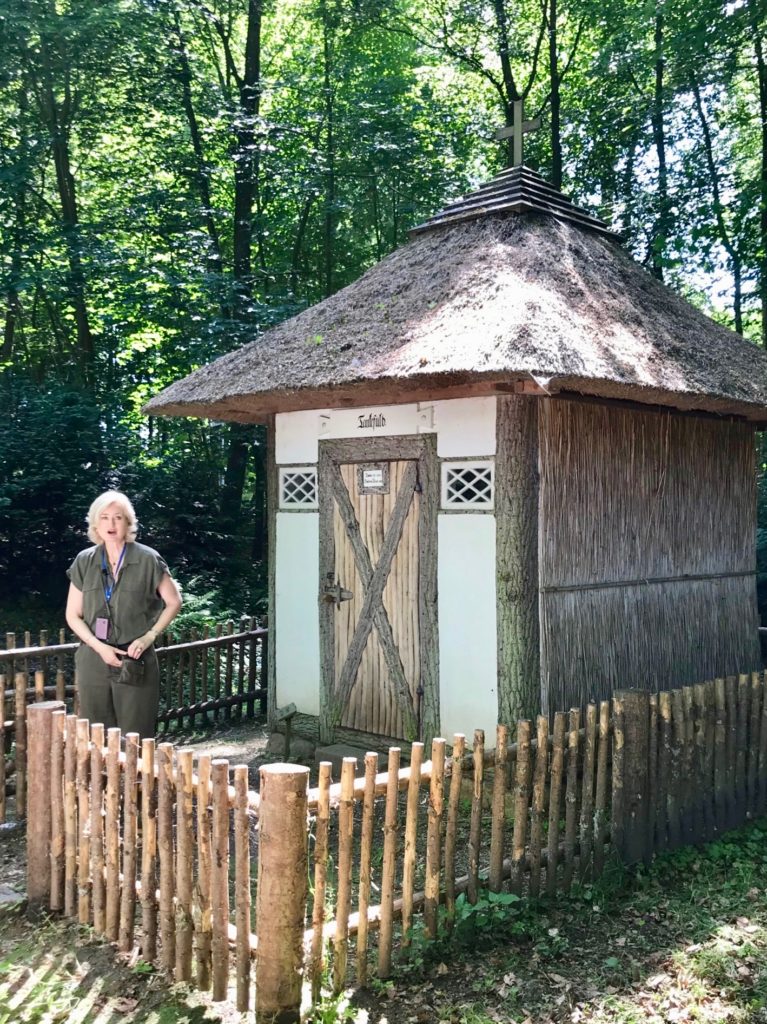


Our first full day in Denmark was, however, spent on the island of Funen in three private gardens. At the Romantic water garden of Sanderumgaard our guide, Susanne Vind, with her husband, has undertaken the ongoing labour of love of restoring their park to its late 18th-century appearance, informed by excellent period paintings, plant lists and diary entries. Unusually for Denmark, but so familiar to us, their labour force comprises a team of eager volunteers (though this is being reviewed in the light of the success of their public profile).
Egeskov is a picture postcard turreted Renaissance castle surrounded by a wide moat around which the current range of mostly 20th- and 21st-century roomed gardens — Duprat and C. Th. Sørensen both worked here — lend historic verisimilitude, even though historic remnants from the 17th century are few and the 19th century maze by H A Flindt can only be gazed at. The requirements of being self-sustaining have made for an eclectic mix of its landscape and buildings.
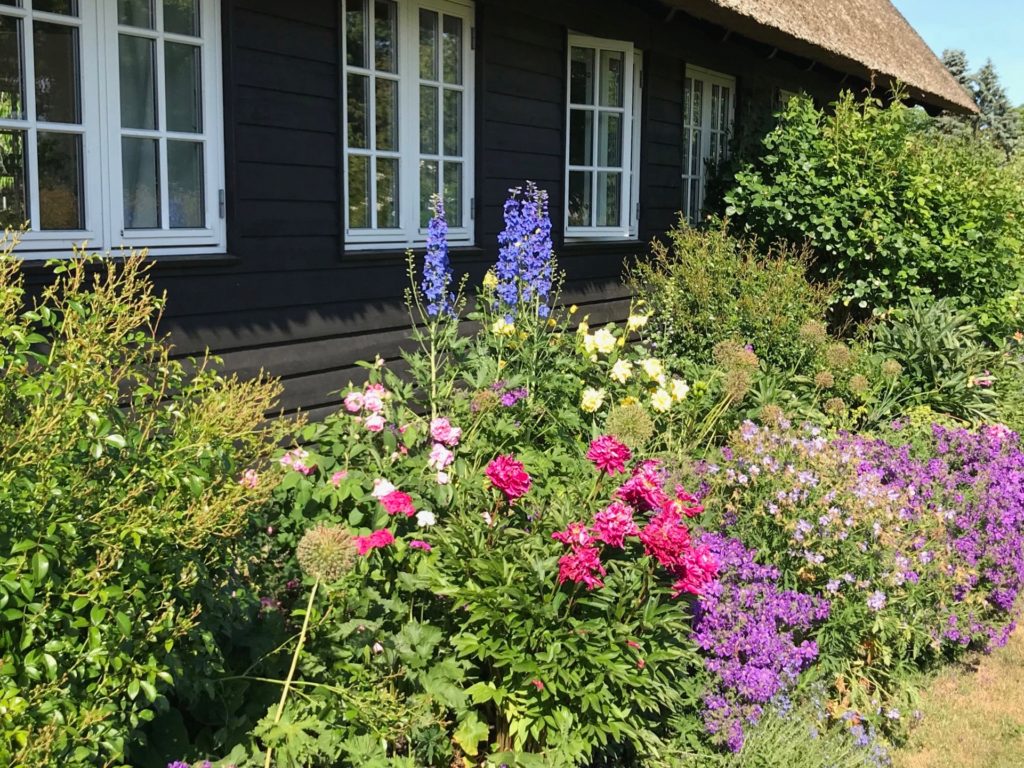
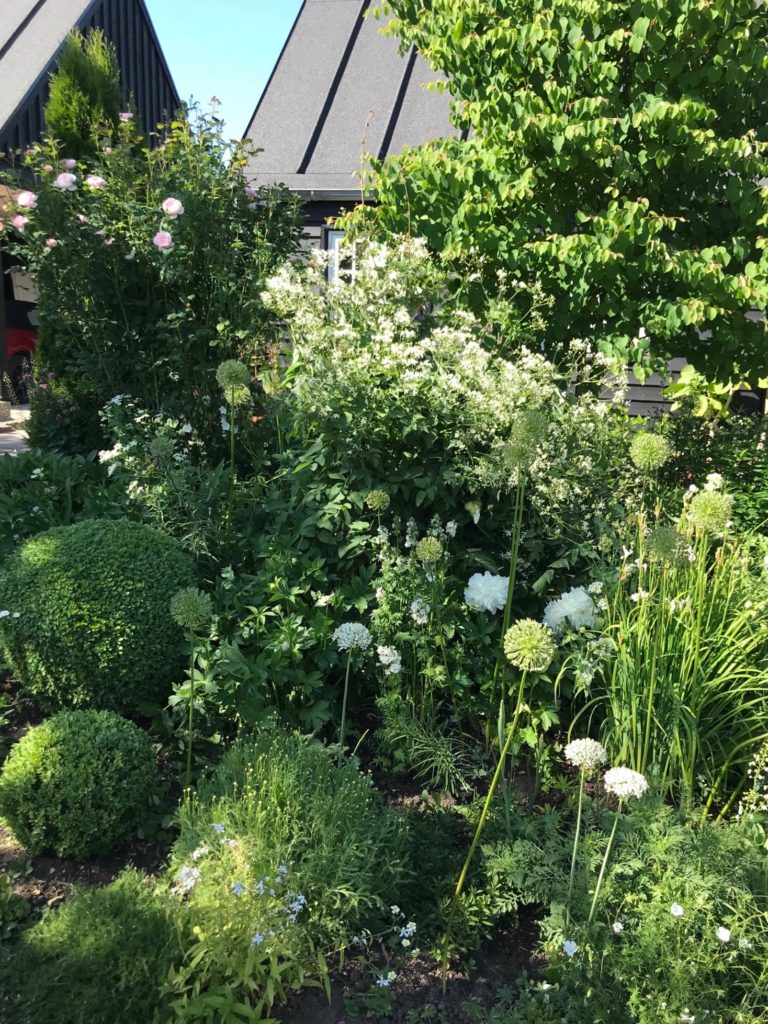
The garden of Helle Troelsen in Troense, on the small island of Tåsinge off Funen could not be a greater contrast. A practising landscape architect Helle created it on organic principals without gardening assistance, using interesting plant associations and arresting colour combinations to produce a series of painterly scenes reminiscent of traditional English cottage garden planting. The apple trees in her garden are covenanted to be retained, having formed part of the original estate of neighbouring Valdemar Castle, and provided us with welcome shade for our tea and biscuits.
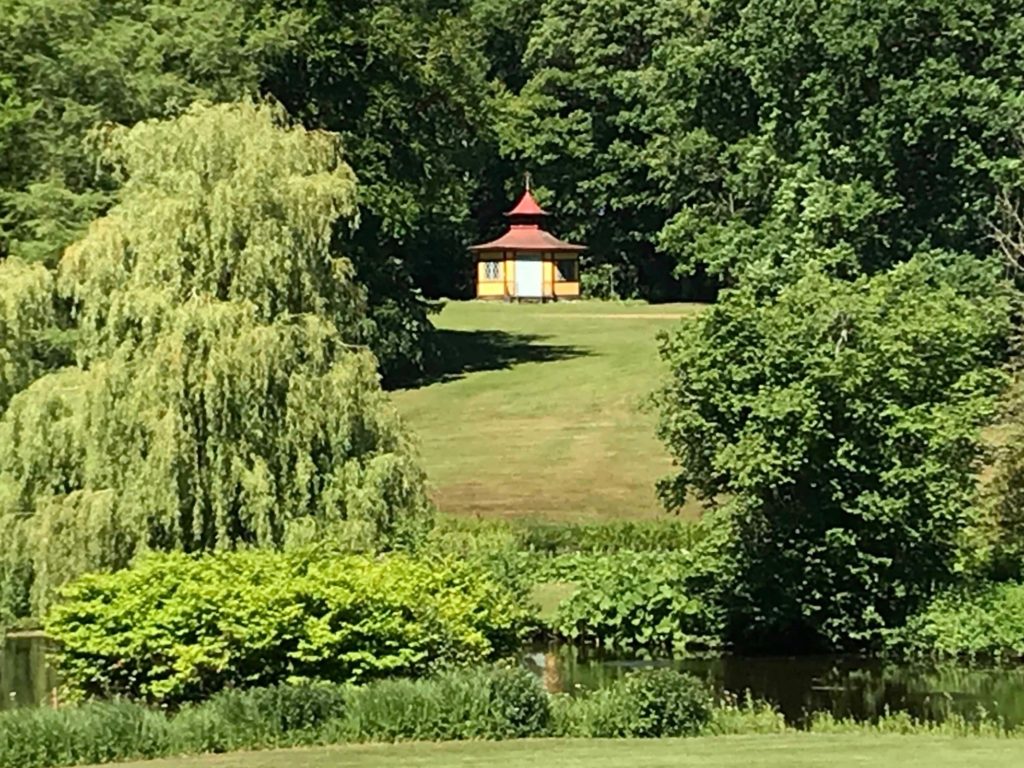

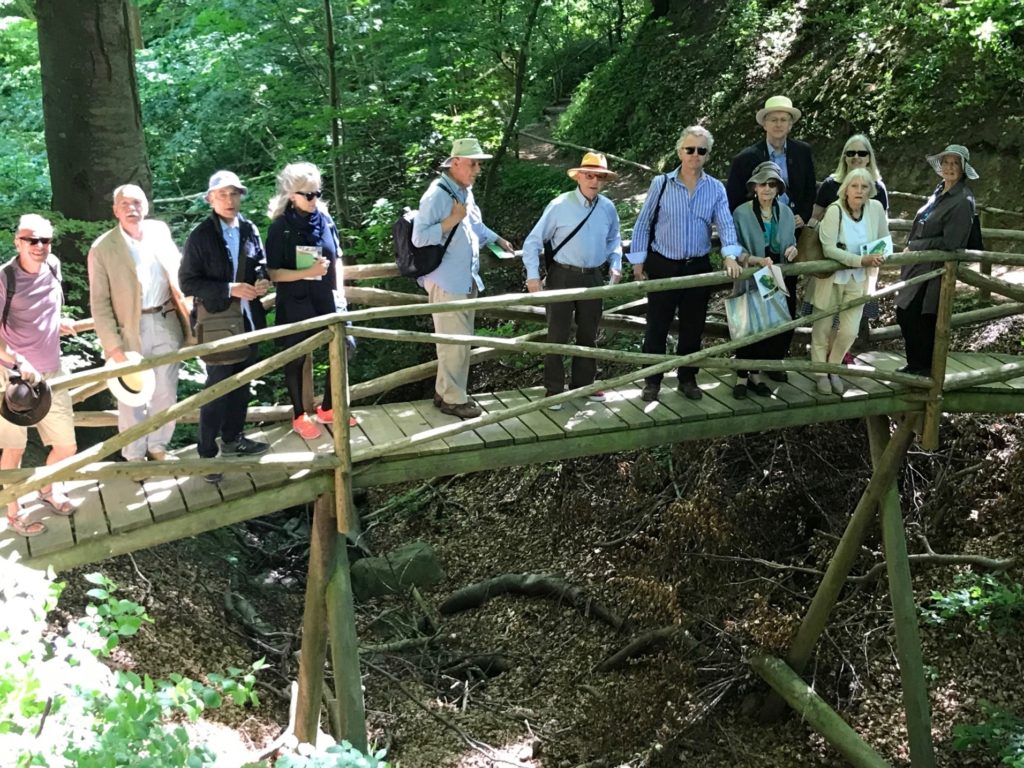
The island of Fyn (or Funen in English) is connected to the island of Sjaelland (or Zealand in English) by the second longest road bridge in the world (according to our coach driver), which we crossed to reach Liselund, now run by the National Museum Service of Denmark. Off the extreme SE of Zealand, on the island of Møn, is ‘the loveliest of Denmark’s manor gardens’. The late 18th-century house is thatched and set in parkland embellished with buildings that seem to be a Danish garden trope: a Norwegian and a Swiss House and a Chinese Pavilion, positioned in rolling terrain which drops precipitously to the adjacent beach in high wooded chalk cliffs (a portion of the park disappeared in a landslide in 1905), rather a rarity in gentle Denmark.

On our way north after lunch at Liselund we stopped to be shown the park of Gisselfeld, the work of English designer Henry Ernest Milner. Its Orangery or Paradehus, skilfully restored by Stig Lauritsen and Greg Kobett, and burgeoning with architectural plants, was where we enjoyed a generous Danish tea before departing for Copenhagen for our four night stay.
In the north of Zealand we visited Louisiana Museum of Contemporary Art, placed on the lip of the Øresund, the straight separating Denmark from Sweden. The former mansion has been extended to allow a greater collection of contemporary paintings and videos to be exhibited, the rooms linked by glass corridors allowing the garden to penetrate the interior. Set in landscaped grounds displaying the works of world famous sculptors the whole complex that day was bathed in the clear coastal light of the Sound.
Helsingør, Shakespeare’s Elsinore, a bit further north, is even closer to Sweden, a mere 4 kms. The circuit on foot past former barracks, along dunes and the ramparts of this palatial Renaissance stronghold, its magnificence only just completed before Hamlet was written, was an easy walk for us.
In Copenhagen’s northern suburbs, works by two of Denmark’s most famous 20th-century landscape architects were essential to our programme.

G.N Brandt’s own garden, which acted as a laboratory for his ideas and motifs, is maintained at the edge of Ordrup Cemetery by the local authority. We completed our visit just as others were assembling to celebrate the centenary of its creation, in Danish of course.

Brandt’s most famous work, Mariebjerg Cemetery, finished 80 years ago, is now in the full majesty and maturity of its 25 hectares, especially of its trees. In temperatures approaching 30c we were enthusiastically received by Sonia Poll, the daughter of C. Th. Sørensen, who followed Brandt in the Chair of Garden Architecture at the Danish Royal Academy of Arts.
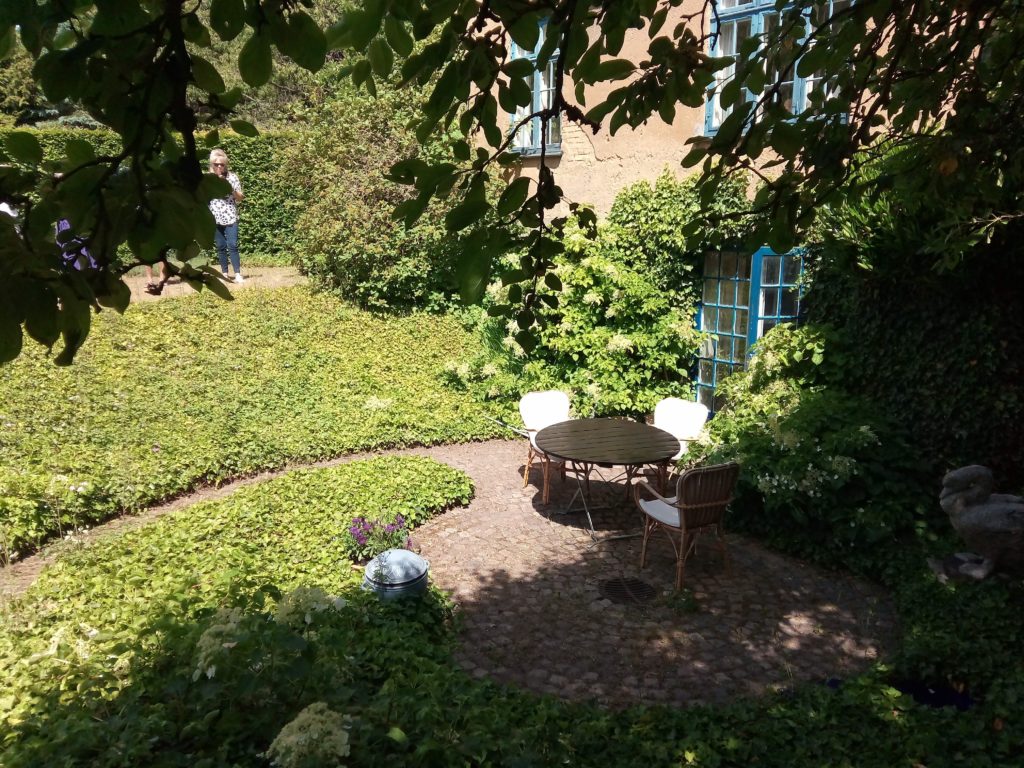
In the 1970’s Brandt designed the garden where she now lives, which brilliantly represents his inclination to incorporate geometric shapes into his landscape layouts. A triangular sloping site accommodates an oval defined by a high hedge, which centres on a path spiralling downwards through an ivy covered bowl of ground to the glass doors at the base of the house.
The Naerum Allotment Gardens from just after the Second World War, considered one of Sørensen’s most important creations, are a group of 40 oval gardens enclosed by hedges of varying heights and set like pendant jewels on a rolling lawn. The choice of undulating terrain, combined with the sweeps and curves of the hedges, accentuates the dynamic impression. The individuality (and in some cases pure eccentricity) of the layout and planting within each plot is worth the peer over the hedges!
New Nordic cuisine has put Denmark on the top rung of international cuisine. Our group dinner was intended to introduce the best of this movement in a sister restaurant to the world famous Noma. Its creators sought to source local produce, even in the early days to encourage foraging for the overlooked ingredients of the Danish countryside, to produce taste sensations from innovative combinations. Our dinner — all five courses of which were utterly delicious — should therefore be seen as another way of appreciating the landscape through senses other than the largely visual.
We made good contacts in Denmark, which may result in more articles on Danish landscapes in the journal and newsletter, so watch out for the study tour effect!
